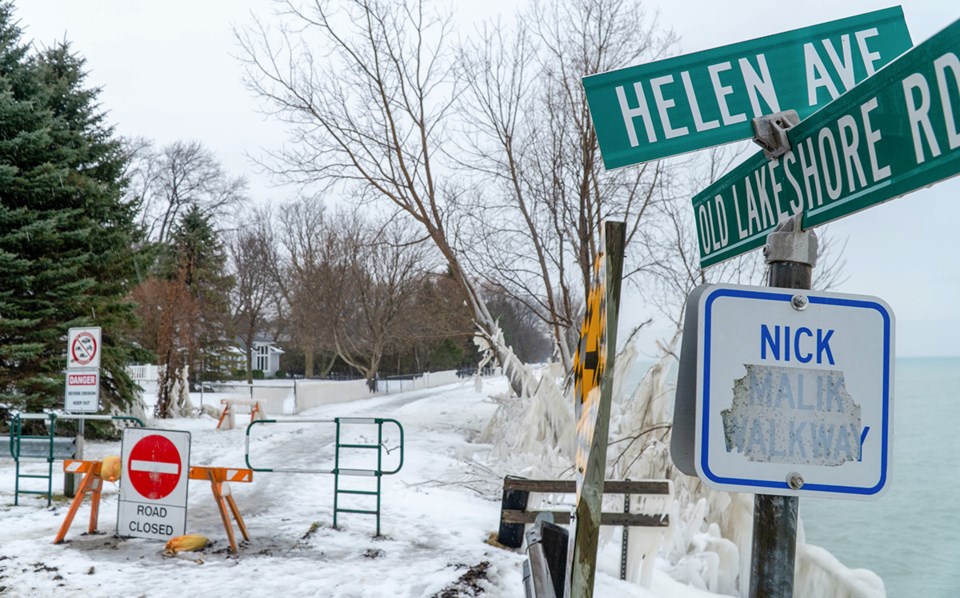Troy Shantz & George Mathewson
The St. Clair Region Conservation Authority appears ready to help local property owners get the permits they need to build shoreline protection and halt Lake Huron erosion.
Angry landowners have claimed the Authority and its complicated permit-issuing process is preventing them from installing new protective infrastructure at their own cost.
Some are even warned to let nature take its course or face prosecution, said Kristen Rodrigues, spokesperson for the citizen group Shoreline Erosion Collective Coalition.
But, pending board approval, the process might soon be simplified, Authority general manager Brian McDougall told The Journal following a Jan. 13 site inspection in Bright’s Grove.
“I think we were able to clear up some misunderstandings,” he said of the meeting with landowners. “The best part about this is the fact that there’s communication.”
Currently, a coastal engineer must sign-off on any shoreline plan before a permit is issued, McDougall explained.
A new emergency process could bypass that lengthy and expensive step.
“If we pass the requirement of having a full engineering design… and get something in place that provides short-term protection and ensures that we’re not going to continue to lose (shoreline),” he said, “that’s what we’re hoping to look to our board to approve.”
Emergency permits would be valid for at least two years, he added.
The Authority’s change of heart is welcome news, said Rodrigues, who estimates 1,000 Lake Huron property owners in Sarnia and Plympton-Wyoming are suffering losses from high water and waves.
“Things are fixable,” she said. “So let’s fix them.”
The Lakeview Trail property where the two sides met is a prime example of what’s happening, she said. The permit the owner applied for last spring still hasn’t been approved.
In the meantime, storms have washed out the old seawall, waves undercut the bank, and 15 feet of land has disappeared into the lake, she said.
The Authority recommends coastal engineers be involved to assess the impact new infrastructure can have upsteam and downstream of properties, McDougall said.
“That’s one of the reasons we want that coastal expertise.”
But he acknowledged that hiring an engineer has been barrier for many because of the time and cost involved.
The St. Clair Region Conservation Authority’s next scheduled board meeting is Feb. 27, but McDougall said he would request an emergency meeting sooner
The Authority also continues to seek federal and provincial funding to help property owners pay for shoreline work, he added.
